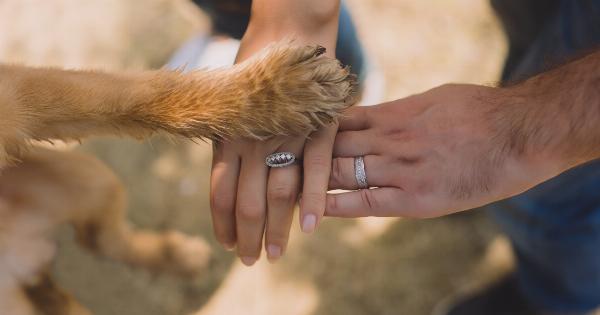Dogs are known for their loyalty, their pack mentality, and their ability to follow a leader. Just like their wild ancestors, dogs thrive in a hierarchical structure where there is a clear leader.
This leader, often referred to as the “boss” or the “alpha,” provides guidance, discipline, and protection to the rest of the pack. In this article, we explore the concept of leadership in dog packs and why dogs need a strong, effective leader to thrive.
The Pack Mentality
Dogs, as descendants of wolves, have retained their pack mentality. In the wild, wolf packs have a strict social structure with a dominant alpha leader at the top. This hierarchical order helps maintain stability and balance within the pack.
It ensures that resources, such as food and shelter, are distributed equitably and that conflicts are resolved efficiently.
Natural Instincts
Even in domesticated dogs, their natural instincts are deeply ingrained. They still seek the presence of a leader and have an inherent need to establish themselves within a structured pack.
Without a strong leader to fill this role, dogs may experience confusion, anxiety, and behavioral issues.
Establishing the Leader
When a dog enters a human household, they naturally look to their owner or guardian to assume the role of the pack leader.
It is essential for the human to establish themselves as the alpha or the boss figure in order to provide the dog with the guidance and structure they require. This means assuming the responsibility for making decisions, setting boundaries, and enforcing rules.
Benefits of a Strong Leader
Having a strong leader in the pack provides numerous benefits for dogs:.
1. Clear Guidance
A confident and assertive leader provides clear guidance for the dog. This clarity helps dogs understand their roles and expectations within the household. It enables them to make sense of their environment, reducing anxiety and uncertainty.
2. Structure and Routine
A strong leader establishes a structured routine for the dog. Dogs thrive on predictability and knowing what is expected of them. Routine helps dogs feel secure and provides a sense of stability in their lives.
3. Emotional Stability
Dogs are incredibly sensitive creatures, and without a strong leader, their emotions may become overwhelming. A confident leader can provide emotional stability by exhibiting calm and assertive behavior.
This helps dogs feel safe and secure, reducing the likelihood of anxiety or aggressive behavior.
4. Boundaries and Rules
A leader sets clear boundaries and enforces rules consistently. Dogs need to understand what behaviors are acceptable and what is not. Boundaries provide a sense of security for the dog, as they know their place within the pack hierarchy.
5. Socialization
A strong leader facilitates socialization opportunities for the dog. Dogs are social animals and thrive on interaction with humans and other dogs.
A leader can create a safe environment for socialization, ensuring that the dog learns appropriate social behaviors and develops healthy relationships.
6. Protection
A leader protects the pack, both physically and emotionally. Dogs feel safe when they know they have someone looking out for their well-being. A leader can provide a sense of security and protect the pack from potential threats.
Building Leadership Skills
While some dogs may naturally accept their human as the leader, others may require more structured training and guidance to establish the leader-follow relationship. Building leadership skills involves:.
1. Confidence
A leader must display confidence and assertiveness. Dogs can sense insecurity or indecisiveness, which may undermine their trust and respect for the leader. Confidence helps establish a stable and secure pack dynamic.
2. Consistency
A leader must be consistent in their behavior, rules, and expectations. Inconsistency can confuse dogs and may lead to behavioral issues. Consistency helps reinforce the leader’s position and ensures the pack understands the boundaries.
3. Positive Reinforcement
A strong leader uses positive reinforcement to reward desired behavior. This could be in the form of praise, treats, or play.
Positive reinforcement encourages dogs to repeat behaviors that are aligned with the leader’s expectations and fosters a positive relationship between the dog and the leader.
4. Clear Communication
A leader communicates effectively with the pack, using body language, tone of voice, and consistent commands. Clear communication ensures that the dog understands what is expected of them and minimizes confusion.
5. Empathy
While a leader needs to be firm and assertive, it is also important to exhibit empathy towards the dog. Understanding the dog’s needs, emotions, and limitations helps build a strong bond and trust between the leader and the dog.
Conclusion
Leadership in the pack is crucial for dogs’ well-being and overall behavior. It taps into their natural instincts and provides them with the structure and guidance they require to thrive.
A strong leader offers clear guidance, establishes boundaries, provides emotional stability, and ensures the pack’s safety. Building leadership skills through confidence, consistency, positive reinforcement, clear communication, and empathy is essential for a harmonious leader-follower relationship.
By assuming the role of the “boss,” humans can fulfill their dogs’ needs and create a balanced and contented pack dynamic.






























